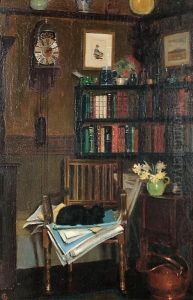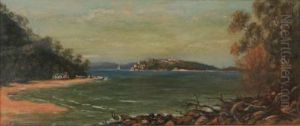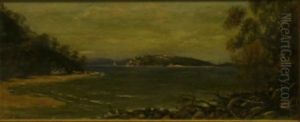George A. Tourcey De Collingridge Paintings
George Alphonse Collingridge de Tourcey, commonly known as George Collingridge, was an influential figure in Australian art and history, best known for his work as an engraver, writer, and explorer. Born on October 29, 1847, in Le Havre, France, into a family of artists and scholars, George developed an interest in art and exploration from a young age. He moved to Australia in 1879, where he would leave a significant mark on the cultural and historical landscape of the country.
Collingridge's early years in Australia were spent in the Sydney area, where he quickly established himself as a skilled engraver and illustrator. His work was featured in various publications, including newspapers and books, showcasing his talents in both illustration and wood engraving. George was deeply interested in Australian history and exploration, which led him to research the early European exploration of Australia. He is perhaps best known for his book 'The Discovery of Australia' published in 1895, in which he argued that Portuguese explorers were the first Europeans to discover Australia, a theory that sparked considerable debate among historians and the public alike.
Beyond his contributions to art and history, Collingridge was also a pioneer in the Australian art scene, advocating for the recognition of Australian artists and the development of a distinct Australian art style. He was a founding member of the Art Society of New South Wales, which played a crucial role in promoting art and artists in Australia. Despite facing several challenges throughout his career, including financial difficulties and the initial skepticism of his historical theories, George Collingridge's passion for art, history, and exploration remained unwavering.
George A. Tourcey De Collingridge passed away on March 1, 1931, in Berowra, New South Wales, leaving behind a legacy that continues to influence the fields of Australian art and history. His work not only contributed to a greater understanding of Australia's early exploration history but also helped to foster a sense of national identity through the arts. Today, Collingridge is remembered not only for his artistic talents and historical research but also for his enduring impact on Australian culture.


